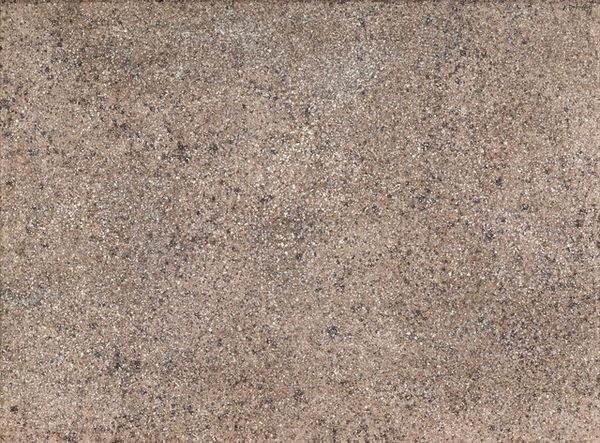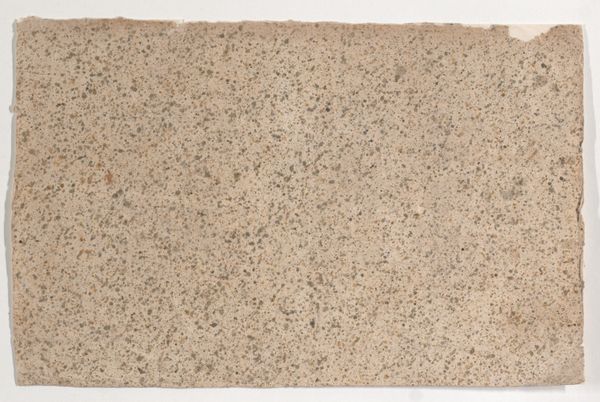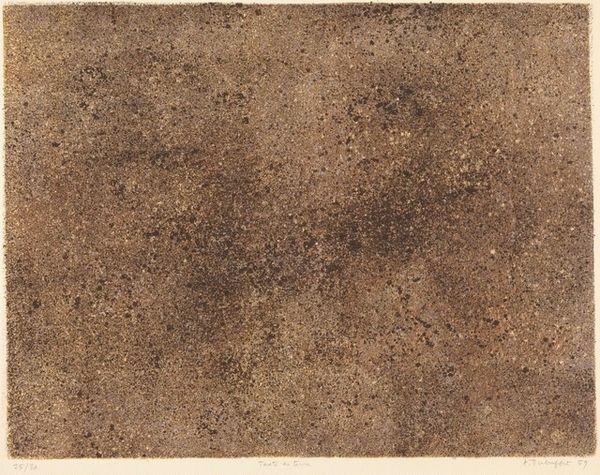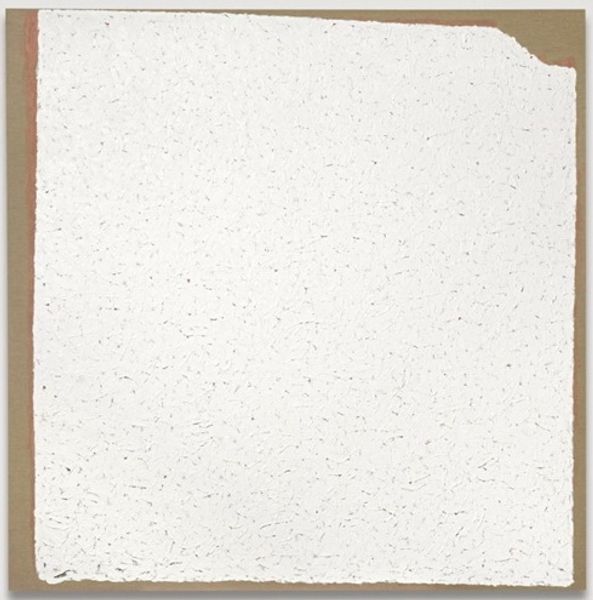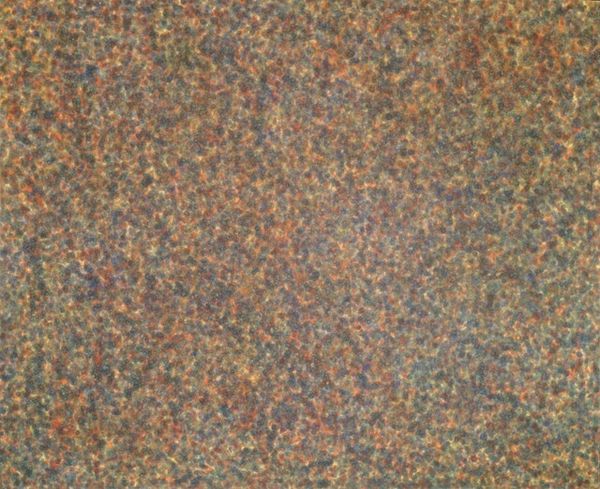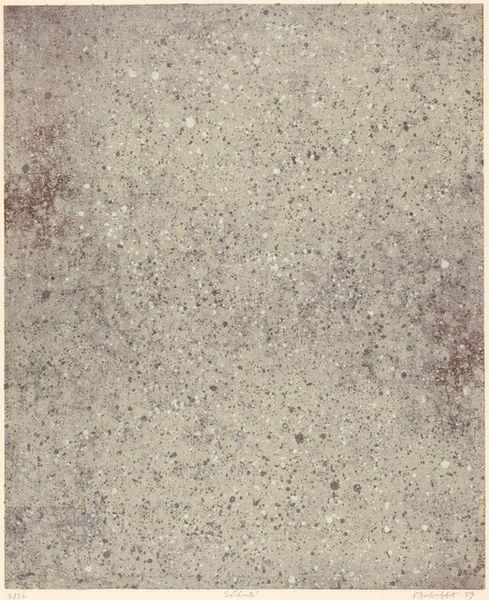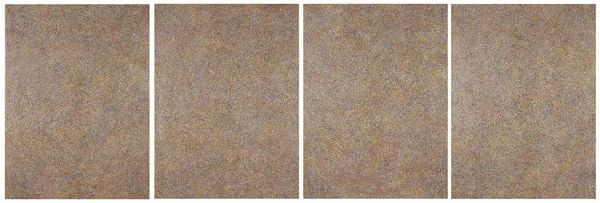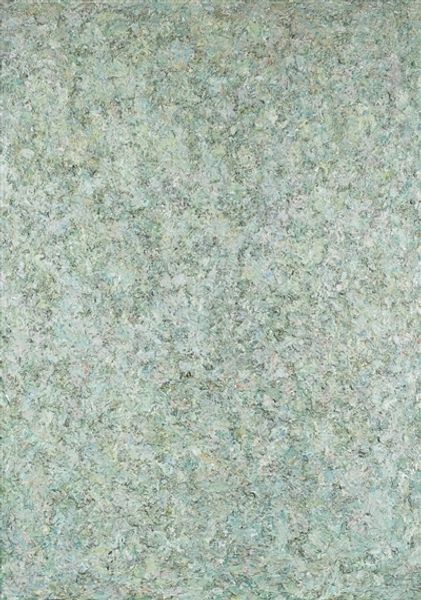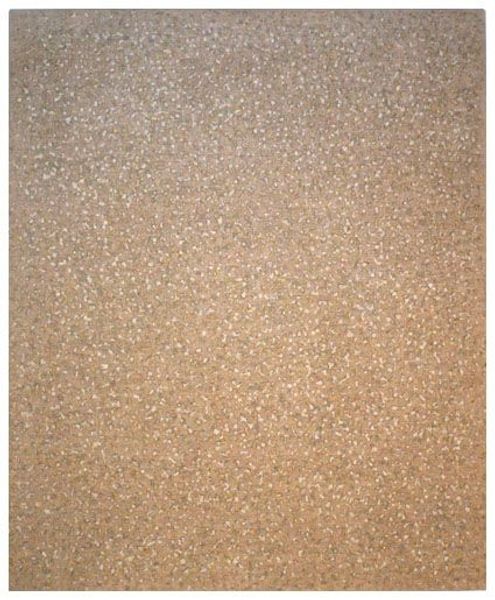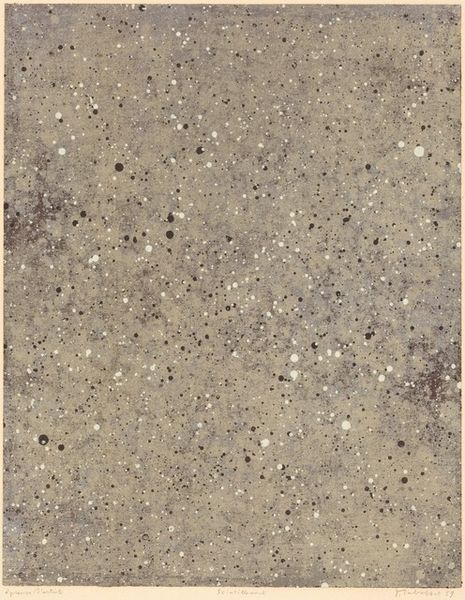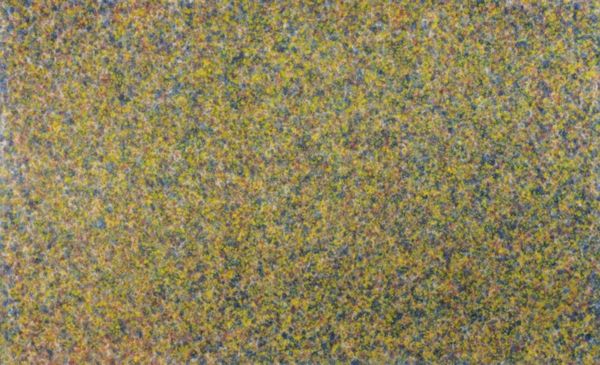
paper
#
natural stone pattern
#
paper
#
geometric pattern
#
abstract pattern
#
organic pattern
#
geometric
#
repetition of pattern
#
vertical pattern
#
abstraction
#
pattern repetition
#
imprinted textile
#
layered pattern
#
organic texture
Copyright: Howardena Pindell,Fair Use
Editor: We’re looking at Howardena Pindell’s *Untitled #20 (Dutch Wives Circled and Squared)* from 1978, created using mixed media on paper. The surface has a gritty, almost industrial feel to it. It’s captivating in its restrained palette. What strikes you most about it? Curator: I'm drawn to how Pindell uses seemingly humble materials to create such a complex surface. Look at the grid. It’s not just a simple structure; it's built up through layers, through repetitive actions. Can we really separate these artistic actions, her labour if you like, from the final aesthetic object? It challenges conventional boundaries. Editor: I hadn’t thought of it as labor before. Is that linked to her using mixed media, elevating what might be considered craft materials to fine art? Curator: Precisely. Pindell deliberately undermines the hierarchy. It's all about the means of production and how that influences the final reading of the piece. The very act of layering and marking transforms simple paper into something powerful, a record of her process, almost like an index of its making. How do you see the repeated circles and squares? Editor: I see order emerging from chaos. Does the title “Dutch Wives” hint at the social context and labor of women traditionally confined to domestic work? Curator: That's a crucial interpretation. Think about Pattern and Decoration movement's broader interest in traditionally female-dominated crafts. Pindell infuses these materials with deeper cultural meanings, reclaiming them for a larger artistic discourse. Is there any commentary here? About value or time? Editor: It really makes me reconsider what I consider 'art.' It’s not just about the image but about where it comes from, and what was needed to produce it. Curator: Exactly. The materials, the process, the social context. It's all interwoven. Analyzing the “how” informs the “what” and “why”. Editor: It is as if the material generates a different type of narrative than paintings produced with more traditional means, a unique view of labor practices of art. Curator: It has shifted the entire viewing process for me and highlights a key aspect of its intention and content: the act of creation itself is integral to the artwork's impact.
Comments
No comments
Be the first to comment and join the conversation on the ultimate creative platform.
